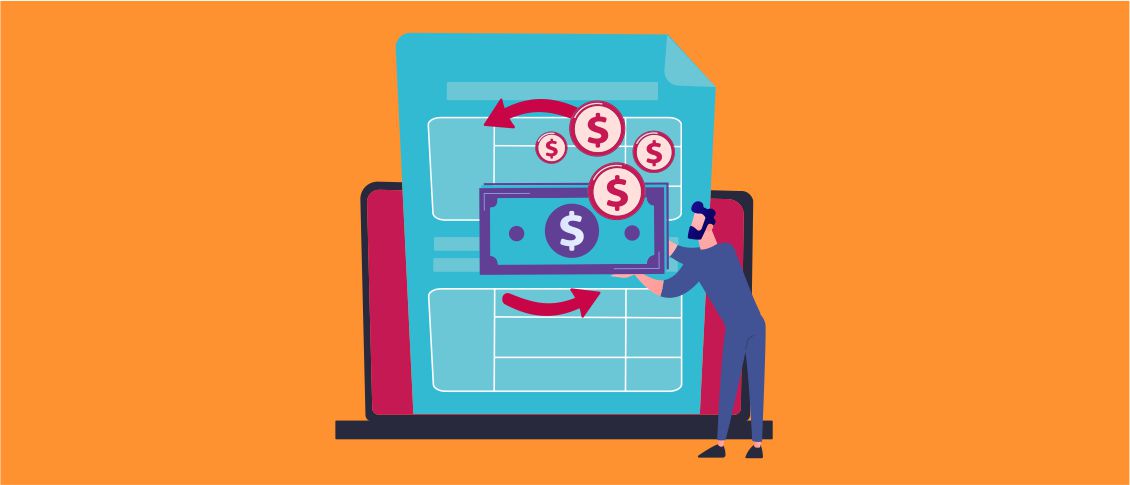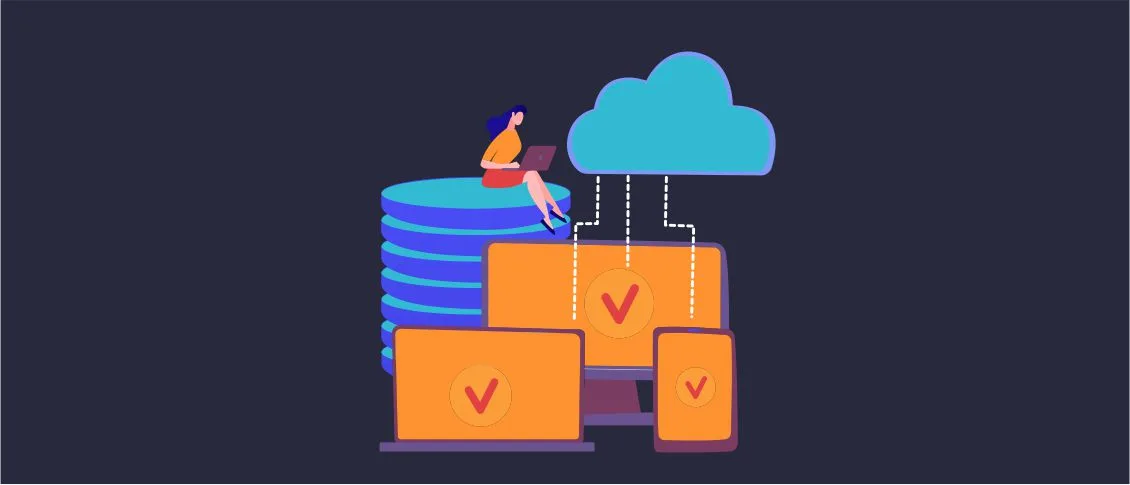What is software modernization?
Over time, any software becomes obsolete. Failure to modernize it can lead to increased software maintenance costs, lower customer satisfaction, lack of competitive advantages, and unreliable protection.
Software modernization is the process of updating legacy applications that presupposes the adoption of new computing approaches, including new languages, frameworks, and infrastructure platforms. Rather than decommissioning or completely replacing an existing system, the modernization of software can extend its lifespan while you will be able to take advantage of technological innovations.
Reasons to conduct software modernization
Why modernize legacy systems?
- High maintenance costs:
As technology advances, the cost of maintaining legacy software becomes less and less feasible. Many companies devote significant resources to maintaining legacy software and do not invest in modernizing it to meet changing business needs. This approach to software lifecycle management negatively impacts business performance and revenue.
- Incompatibility with newer technologies:
It’s critical to make sure that your software can be seamlessly integrated with the tools and applications you need to run your business effectively. And while your legacy system doesn’t allow you to implement advanced features, your competitors probably have already done it.
- Outdated interface:
An outdated interface can hurt any business by undermining customer trust in the brand, leading to lower sales. Thanks to modernization software will look and feel much more appealing and relevant in up-to-date conditions.
- Increased outages and overloads:
Can your legacy software support the increased capacity and growth of your company? Throughput is not limited only by system resources, it is also often reduced when a system is overloaded. When the load on a system exceeds the capacity of its resources, performance slows down.
- Reduced business competitiveness:
As legacy software cannot keep up with today’s technological demands, it is more difficult for companies to achieve their business goals. As businesses grow, technology needs to be changed. Your business is constantly evolving, and your software should reflect this progress. Timely conducted software product modernization will allow you to reach this goal.
- Security vulnerabilities:
As legacy systems become obsolete, it becomes nearly impossible to continue to keep them secure. Legacy systems can’t correspond to the latest security standards, so they pose a cybersecurity threat to your business. This can cost you dearly: loss of strategic data, business disruptions, leaked confidential information, reputational damage, and loss of trust.
- Data corruption and loss:
Legacy software usually fails, which can cause programs to slow down, reboot, and close on their own. Such failures may result in data corruption and loss. Professional software modernization services will help you to get over such problems.
- Falling performance:
Outdated technology runs more slowly, needs more time to complete tasks, and requires more resources for its maintenance. Frequent outages caused by an outdated system make it difficult for employees to work which affects their productivity and can lead to downtime.
Software modernization process
Step One: Determine what tasks/challenges the application should deal with
This step addresses key questions on how applications can improve enterprise operations. Why does the software product need to be modernized? For example, you may need to reduce technical debt, improve service quality, increase efficiency, scalability, security, compliance, etc. Without comprehensive management of the software modernization solution, upgrade efforts are often ineffective.
Step Two: Analyze the current state of the system
- Disassemble and compile the source code to determine the viability of the code in the current architecture;
- Determine the stability of the application to assess its suitability for modernization;
- Review code to remove unused parts that will no longer drain resources;
- Analyze user interface to determine its complexity and efficiency in a modernized application;
- Investigate the complexity, size, and design of the application’s databases or data stores;
- Define external system interfaces to understand data flows and to find out if there are cross-system processing capabilities;
- Prepare detailed documentation of the logical flows in the existing system to ensure that the modernized application preserves the processes of the original system.
Step Three: Make a technology assessment
- Architecture review;
- Review of development and QA processes;
- Integration review;
- Deployment review;
- Technology audit (with all its components).
Step Four: Define the future vision for the system
Once a thorough understanding of your needs and goals has been gained based on a detailed assessment of the application, the ultimate goal of software modernization needs to be defined. It should indicate the optimal structure of the application after all the introduced changes.
Step Five: Estimate the scope of the project
Once you have defined the goal, you can make an accurate estimate of the project scope. At this step, you should take into account technical needs based on the goals and activities of your company, as well as technical requirements based on the demands that will be placed on your application once it is modernized.
Enhance Your Phone’s Style with our Durable phone cases – Explore the Best Selection of Phone Cases for Ultimate Protection!Step Six: Build a Roadmap
After reviewing your business performance, the current state of your application, and your vision for the future, you’re ready to build your roadmap. The information from the previous steps will form the basis of your software product modernization roadmap. Your company’s roadmap should be unique. It’s impossible to show what a prototype roadmap looks like because there can’t be two projects that will be the same. The main thing about a project roadmap is that it should be clear and it should be presented in a visual form.
Key technologies for software product modernization
Cloud: Cloud migration allows companies to utilize public, private, hybrid, or multi-cloud options to leverage cloud computing benefits such as scalability, flexibility, and low costs.
DevOps: DevOps helps to increase visibility into workflows and enhance developer productivity. In this way, organizations can deliver software more efficiently, improve software quality, and better respond to changing requirements.
Microservices: The migration from monolithic software to microservices allows for greater scalability, development speed, isolation from failure, technology flexibility, and ease of maintenance.
API: APIs enable data exchange and communication between applications, this allows legacy apps to be easily integrated with new cloud systems. APIs help enterprises take advantage of cloud computing opportunities without replacing existing systems.
Containers: Containers provide an easy and versatile approach to packaging and deploying applications, as well as simplifying movement between environments. This allows software products to be deployed and operated in the cloud, ultimately delivering growth and flexibility benefits.
Orchestration and Automation: Automation allows individual tasks to be performed independently of each other, while orchestration automates multiple functions as a workflow. Automation and orchestration improve scaling, deployment, security, and networking efficiency.
Softacom Migration Framework: Softacom Migration Framework is a comprehensive software modernization solution developed by our team based on a complex of approaches, including technical, organizational, and communication techniques. It is a non-commercial solution that our team built to use on software migration and modernization projects.
Software modernisation patterns
Redeploy or rehost. The “lift and shift” approach means that you will move an application from an on-premises deployment to a public, private, hybrid cloud, or multi-cloud environment.
Replatform (Switch platforms). Software replatforming presupposes updating one or more platform components, such as the underlying database. Usually, replatforming leads to the necessity to introduce some changes to the code base.
Refactor or rearchitect. Refactoring is the process of updating the code base to improve the code itself without affecting the functioning of the program. Thanks to rearchitecting your program, you can leverage the benefits of modern architecture types like microservices or containers but this process may require upgrading the code base.
Replace. When you decide to replace your app, you should start the development from scratch and create a brand-new code base. Replacing the outdated program feature with a new one is the first approach of this type. Reimagining the entire program and selecting which features to keep and which to add is an additional possibility.
Best practices for legacy software modernization
- If you start modernizing your application without adequately estimating the possible costs, it can lead to problems in the future. It is important to understand the conversion processes you will have to go through, carefully estimate the scope of work, and foresee possible additional costs. Therefore, to avoid being left with a half-completed project, make sure you collaborate with qualified partners.
- Technical debt is the consequence of poorly written code. The most dangerous type of technical debt is code that is difficult to change. Many teams know about their technical debt but do not eliminate it. Over time, the situation gets only worse: the debt grows and development slows down. The situation deteriorates, when team members leave the company, taking their knowledge with them. Adopting cloud computing is a good opportunity to address technical debt. Cloud providers allow companies to remove the burden of maintaining and upgrading the underlying data center infrastructure. Thanks to application modernization software development teams can focus on building new solutions rather than fixing bugs.
- The more complex the legacy software modernization process is, the more risks related to the functionality of the application can be detected. An experienced technical team can detect the most likely issues to avoid negative consequences. It is also important to make sure that all possible test scenarios are clearly defined before the testing phase begins.
- Data security should be a mandatory part of a successful software modernisation strategy. You need to think beforehand about the ways to protect your data from hacks or loss.
Benefits of software modernization for businesses
- Easy maintenance
- Reduced cost of new functionality implementation
- Increased security
- Modern competitive UI/UX
- Easy scaling and integration with other enterprise software solutions
- Increased system performance
- Higher user engagement
Related Solutions and Products by Softacom













